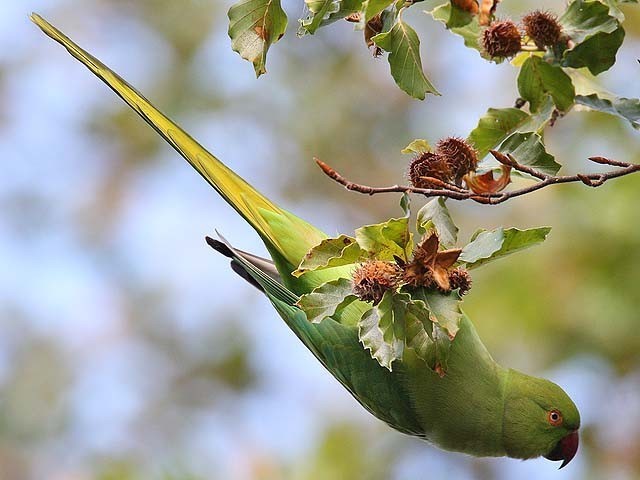Ring-necked Parakeet census
Researchers from the Biology Department of Imperial College London have recently begun a four-year study into the effects of the Ring-necked Parakeet on native bird species in the UK. As part of this work it is essential to have accurate estimates of the current population size of the Ring-necked Parakeet in the UK, and its growth rate. The last census was carried out in 2001/2, and current estimates of population size are based on this data and the growth rates that they estimated at the time. This gives a current estimate of 20,000–50,000 individuals.

Ring-necked Parakeet, Ramsgate, Kent (Photo: Derek Washington)
In order to estimate the current population size, a large-scale roost count will be carried out. The first count will take place on Sunday 3rd January 2010, and will be simultaneous across as many known roosts as possible, using the same methods at all sites. If the count is successful the count will be repeated every three months to enable researchers to estimate the population growth rate and any changes in roost usage. Imperial College are now seeking volunteers who would be willing to assist with two elements of this project:
- Compiling a list of all known roost sites
- Assisting with the first roost count on Sunday 3rd January 2010
Counts will begin two hours before sunset (14:04 on Jan 3rd) and will continue for half an hour after sunset (16:34) to allow for any individuals arriving in the residual light of dusk. The intention is to have several people counting at each site in order to control for individual error and allow cover for all entry routes into the roost. No experience is necessary to assist with the count — a full and clear protocol, along with data collection sheets, will be provided. The data collected during these counts will be prepared for publication in relevant journals and will be widely publicised.
If you can help, then please email parakeet@imperial.ac.uk.

